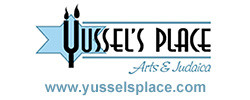
While some ketubot are stunning works of art, the most important part of any ketubah is what it says.
After all, you and your partner will be signing this document and affirming that what it reads is true, so the first thing you’ll want to do is find a ketubah with text that reflects the values you and the person you’re marrying share.
You also may want to strike the right balance for yourself between traditional and progressive options. Until the 20th century, almost all ketubot contained the same basic text in Aramaic and were signed only by the groom and two male witnesses. The document was essentially the groom’s marriage proposal to the bride and his pledge to “honor, support, and provide for her”. While many traditionally observant Jews continue to adhere to the original text and customs, a wide variety of alternatives are now available.
You will need to decide in which language or languages you’d like your ketubah to be. Many ketubot are in Hebrew or Aramaic, with side-by-side translation.
If you choose to start from scratch and write your own text, it’s a good idea to consult with a rabbi or scholar of Jewish law. One suggestion for a custom-written ketubot is: the date of the wedding on both the Jewish and Gregorian calendars, the couple’s names as well as the names of witnesses in attendance, and, what she calls “a conversation of promise,” a reflection of what each partner wants in the relationship and the marriage.

